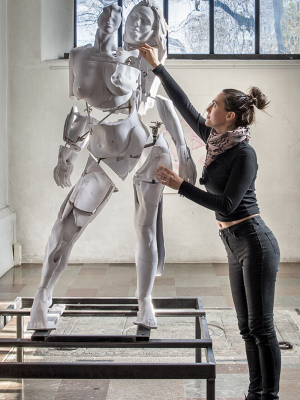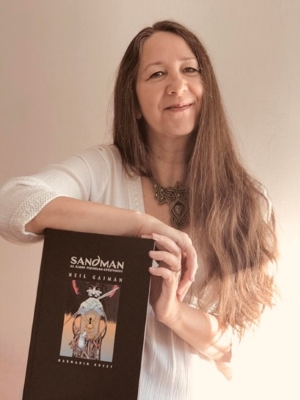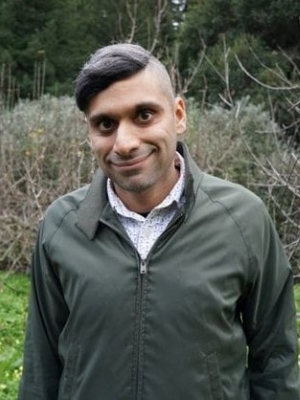About the event
Over the past two decades, 'the Anthropocene' has emerged as a term to describe the geological epoch in which we live (as was its original terminological provenance), but also as a tool for a wider understanding of how human activity is shaping all aspects of our world. What kind of monsters populate the Anthropocene, and how can they be good to think and live with in this era of uncertain futures and rapid ecological change? The Monsters of the Anthropocene collaboratory invites to our final event, where we gather a panel of artists and scholars to explore imaginaries of the Anthropocene, with a particular focus on othering, vulnerability and marginalization in our times. Which possibilities do the increased attention to human-nonhuman relationships in the Anthropocene offer for thinking and living with the monster? How can a range of non-human companions, like monsters, robots, animals, and land teach humans something about co-dependencies and shifting positionalities?
Our panel consists of artist Tove Kjellmark (S), Senior Lecturer Ildikó Limpár (Pázmány Péter Catholic University, Budapest, HU) and Professor Neel Ahuja (University of California, Santa Cruz, US). Kjellmark's recent work The Robot, the Horse and the Immeasurable explores the connections between bodies, movement and agency. Limpár has worked extensively on the monster in her research, with her monograph The Truths of Monsters: Coming of Age with Fantastic Media (2021) addressing themes of climate crisis and science fiction. Ahuja’s work tackles the interstices between imperial expansion, human-animal relationships, and warfare, amongst other themes. The moderator will be Aino-Kaisa Koistinen.
The Monsters of the Anthropocene is a collaboratory between the Monster Network and the Oslo School of Environmental Humanities (OSEH). Its aim is to negotiate the role of the monster as part of the ongoing decentring of the human and exploration of vulnerability and inclusion in feminist, posthumanist, critical disability and decolonial studies, and in environmental humanities.
Accessibility
This is an online Zoom webinar that will be recorded. The event will be live-captioned by Zoom and a transcript will be made available afterwards. The sound file will also be published as a Monster Talks podcast.
Format
In the webinar mode, only the panel participants and the moderator will be visible. The audience can engage with the event through posting questions in the Q&A box, and by commenting and discussing as the event unfolds in the concurrent Discord channel made available to everyone.
Participation is free, but you must register to receive the Zoom link.
About the speakers
 Tove Kjellmark was born 1977 and is based in Stockholm, Sweden. She is educated at École des beaux arts and The Royal Institute of Art in Stockholm, where she received her M.F.A. 2009. Kjellmark is initially trained as a sculptor. Besides working in her studio she teaches, mentors and collaborates with humans and non-humans of various types and technologies.
Tove Kjellmark was born 1977 and is based in Stockholm, Sweden. She is educated at École des beaux arts and The Royal Institute of Art in Stockholm, where she received her M.F.A. 2009. Kjellmark is initially trained as a sculptor. Besides working in her studio she teaches, mentors and collaborates with humans and non-humans of various types and technologies.
Tove Kjellmak’s work can be described as visual appropriations of forms and structures from the complex world in which we live. She is currently looking at the glitches in transformations between the digital and the organic; the gaps in the experience when moving from one world to another. Tove Kjellmark is recognized for creating spaces of critical reflection about techno-scientific acceleration, artworks that asks questions about the nature of human and nonhuman agency in a highly ‘indoctrinated’ post-human world. Over a longer period of time she dealt with techno-animalism, giving rise to another type of animality, another type of nature but above all very delicately playing the affects of the involved audience.
 Ildikó Limpár is a Senior Lecturer at Pázmány Péter Catholic University, Budapest (Hungary). She teaches and researches contemporary literature and film with a special focus on fantasy and monster narratives, actively publishing in this academic field both in English and in Hungarian. Her monograph The Truths of Monsters: Coming of Age with Fantastic Media (McFarland, 2021) discusses the use of monsters as literary tools addressing life challenges in contemporary coming-of-age fantasy and science fiction, including challenges that are posed by a rapidly and terrifyingly changing ecosystem. The monsters she has found most intriguing are the undead ones and those who specifically link to the idea of death (and/or possible rebirth), and as part of her research, she aims to explore the relevance of these monsters in fictions of the Anthropocene. She is editor of Displacing the Anxieties of Our World: Spaces of the Imagination (Cambridge Scholars Publishing, 2017), a Hungarian anthology of pop science essays in Monster Studies, focusing on types of monsters in contemporary popular culture (Athenaeum, 2021) and is presently editing a Hungarian anthology on monstrous spaces in contemporary fantastic narratives (forthcoming in 2022 summer). She also writes and translates fiction with monsters; among others, she is the Hungarian translator of Neil Gaiman’s cultic Sandman graphic novel series.
Ildikó Limpár is a Senior Lecturer at Pázmány Péter Catholic University, Budapest (Hungary). She teaches and researches contemporary literature and film with a special focus on fantasy and monster narratives, actively publishing in this academic field both in English and in Hungarian. Her monograph The Truths of Monsters: Coming of Age with Fantastic Media (McFarland, 2021) discusses the use of monsters as literary tools addressing life challenges in contemporary coming-of-age fantasy and science fiction, including challenges that are posed by a rapidly and terrifyingly changing ecosystem. The monsters she has found most intriguing are the undead ones and those who specifically link to the idea of death (and/or possible rebirth), and as part of her research, she aims to explore the relevance of these monsters in fictions of the Anthropocene. She is editor of Displacing the Anxieties of Our World: Spaces of the Imagination (Cambridge Scholars Publishing, 2017), a Hungarian anthology of pop science essays in Monster Studies, focusing on types of monsters in contemporary popular culture (Athenaeum, 2021) and is presently editing a Hungarian anthology on monstrous spaces in contemporary fantastic narratives (forthcoming in 2022 summer). She also writes and translates fiction with monsters; among others, she is the Hungarian translator of Neil Gaiman’s cultic Sandman graphic novel series.
 Neel Ahuja is Professor of Feminist Studies and a core faculty member of the Critical Race and Ethnic Studies Program at the University of California - Santa Cruz. Neel’s research explores the relationship of the body to the geopolitical, environmental, and public health contexts of colonial governance, warfare, and security. Neel is the author of two books, Bioinsecurities: Disease Interventions, Empire, and the Government of Species (2016) and Planetary Specters: Race, Migration, and Climate Change in the Twenty-First Century (2021). He has written a variety of essays on the connections of race and colonialism to the fields of disability studies and animal studies. He is currently working on two research areas, one exploring the race and species politics of COVID-19 and another analyzing United States counterterrorism incarceration, rendition, and interrogation practices.
Neel Ahuja is Professor of Feminist Studies and a core faculty member of the Critical Race and Ethnic Studies Program at the University of California - Santa Cruz. Neel’s research explores the relationship of the body to the geopolitical, environmental, and public health contexts of colonial governance, warfare, and security. Neel is the author of two books, Bioinsecurities: Disease Interventions, Empire, and the Government of Species (2016) and Planetary Specters: Race, Migration, and Climate Change in the Twenty-First Century (2021). He has written a variety of essays on the connections of race and colonialism to the fields of disability studies and animal studies. He is currently working on two research areas, one exploring the race and species politics of COVID-19 and another analyzing United States counterterrorism incarceration, rendition, and interrogation practices.
.png)